Red-shouldered Hawk
Order: Falconiformes
Family: Accipitridae
Genus: Buteo
Species: lineatus
**Red-shouldered Audio Below**
Description
-
Length: 17"
-
Wing span: 40"
-
Weight: 1.4 lb (630 grams)
-
Medium sized hawk
-
Adults have black & white striped tail and wings
-
Adults have extensive red barring on their chest and belly
-
Sexes are silimar in plumage with females being larger
-
Juveniles are brown and white with more barring on chest and belly. They have distinct blakc and white tail banding
Factoids:
-
The Red-shouldered Hawk is divided into five subspecies. The four eastern forms contact each other, but the West Coast form is separated from the eastern forms by 1600 km (1000 mi). The northern form is the largest. The form in very southern Florida is the palest, having a gray head and very faint barring on the chest
- Although the American Crow often mobs the Red-shouldered Hawk, sometimes the relationship is not so one-sided. They may chase each other and try to steal food from each other. They may also both attack a Great Horned Owl and join forces to chase the owl out of the hawk's territory
- By the time they are five days old, nestling Red-shouldered Hawks can shoot their feces over the edge of their nest. Bird poop on the ground is a sign of an active nest
- The Great Horned Owl often takes nestling Red-shouldered Hawks, but the hawk occasionally turns the tables. While a Red-shouldered Hawk was observed chasing a Great Horned Owl, its mate took a young owl out of its nest and ate it
- The clearing of forests over the last two centuries probably led to decreases in populations of the Red-shouldered Hawk, while increasing habitat for the Red-tailed Hawk. Populations appear stable, but may be declining in some areas.
*Last four photos to the right are juvenile hawks
All photographs and audio clips are ©Jamie Mullin 2006
Sources: Cornell Lab of Ornithology & The Sibley Guide to Birds.
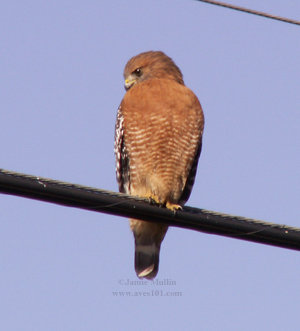 |
|---|
 |
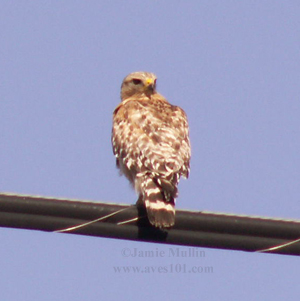 |
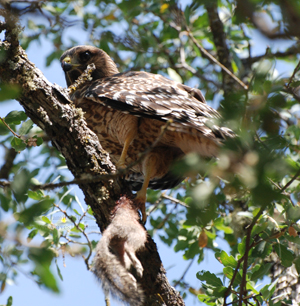 |
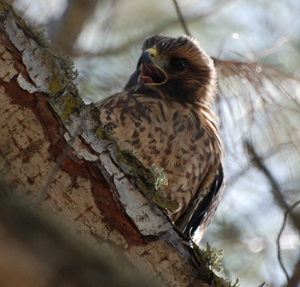 |
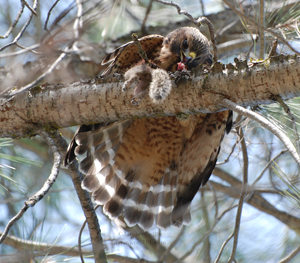 |